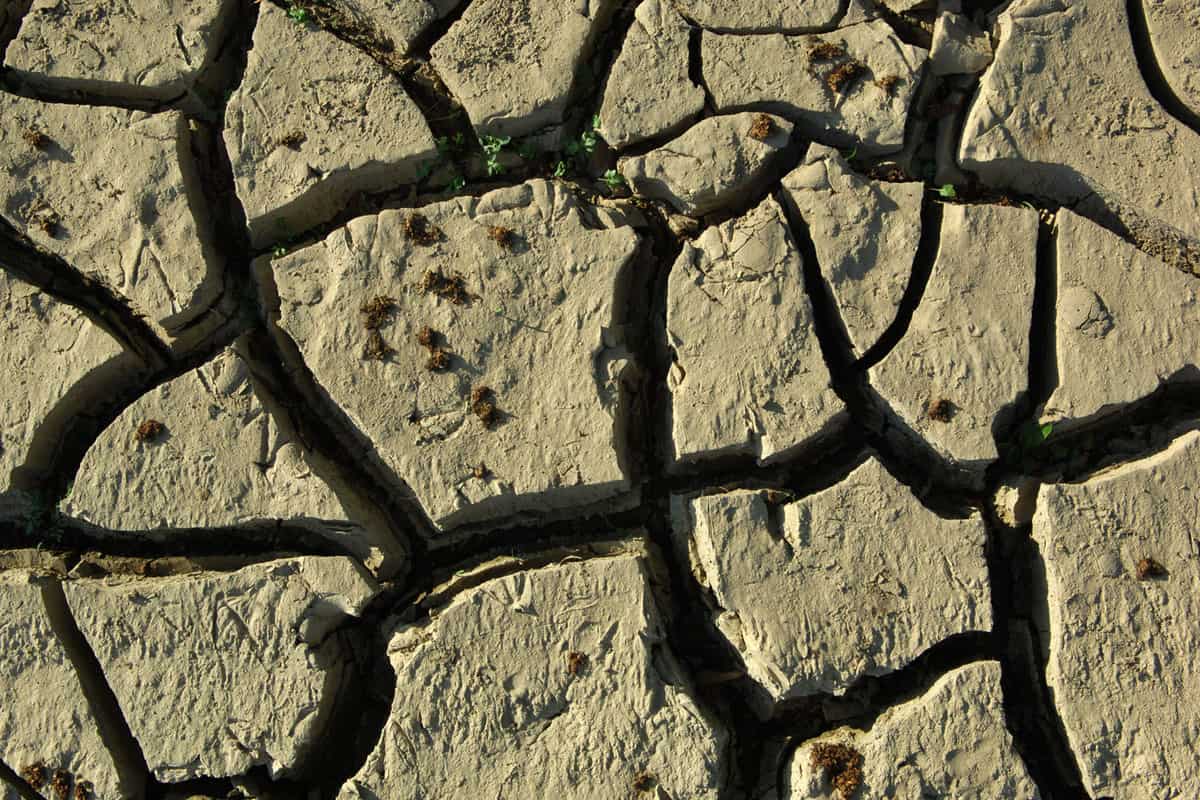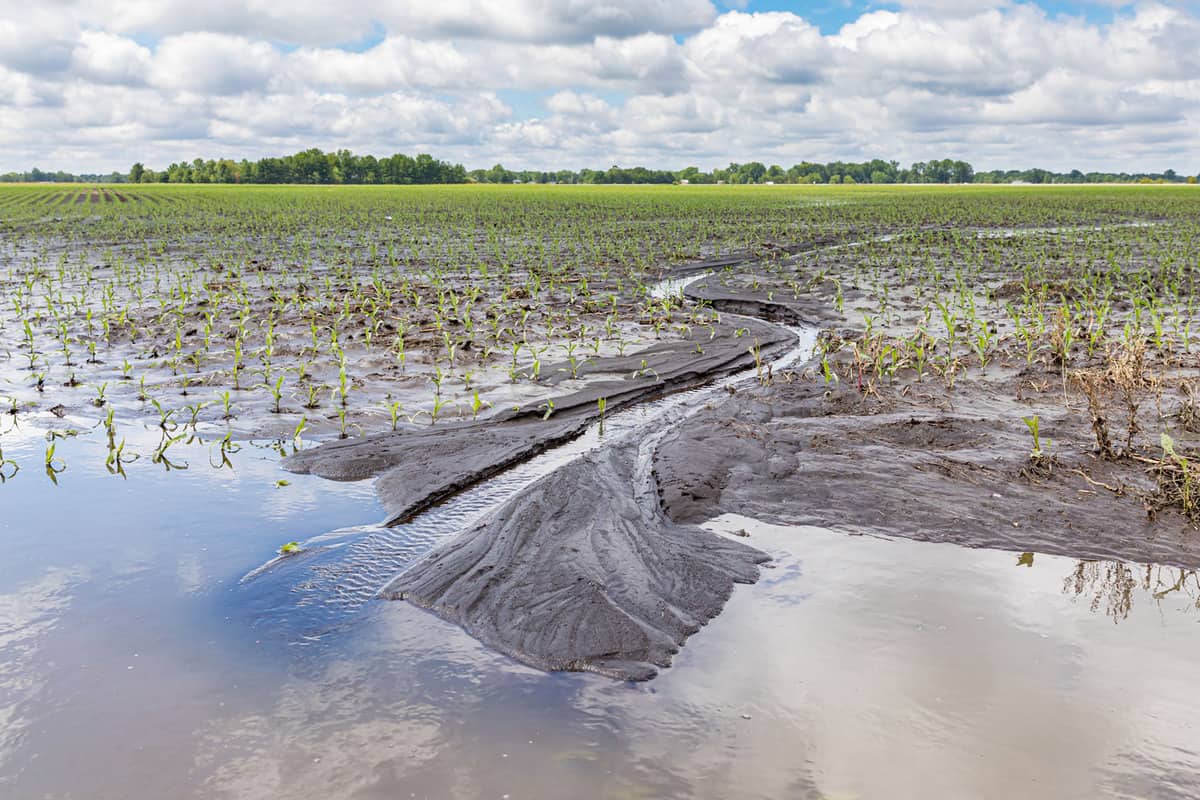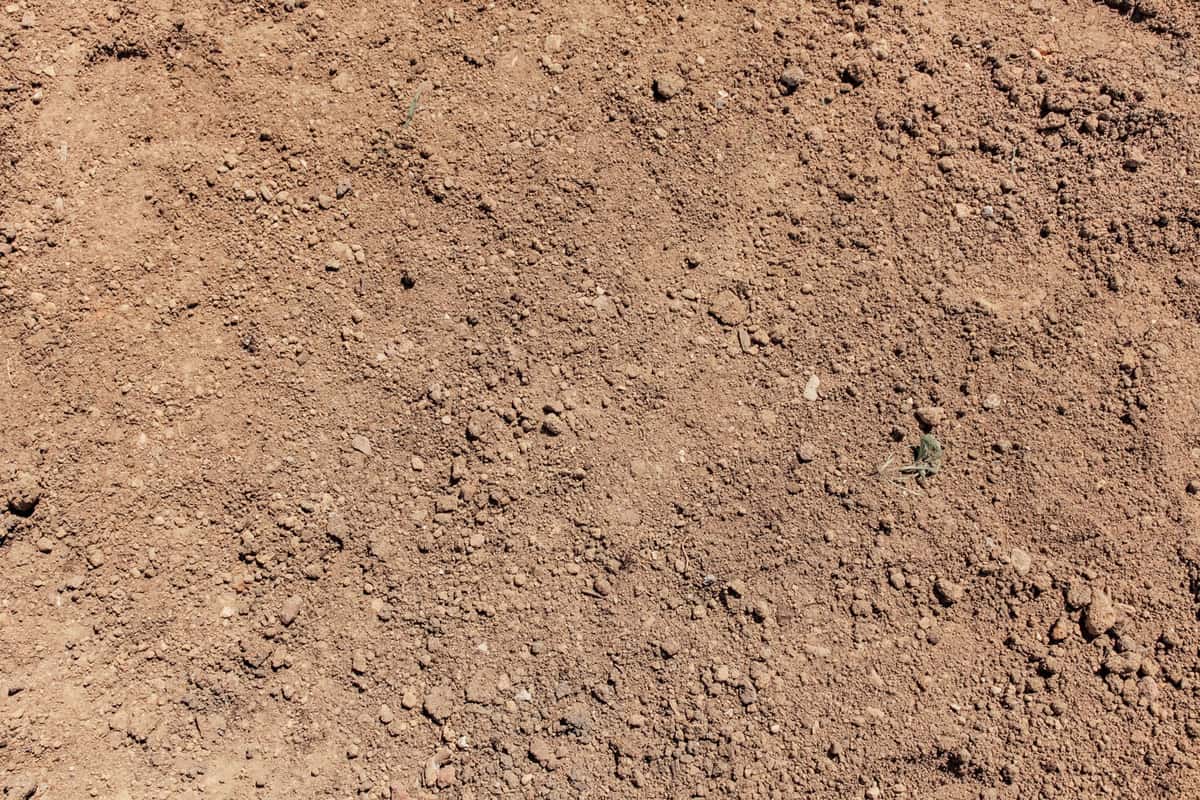Figuring out how the ground in your garden works can be tricky sometimes. Has it been raining a lot recently, and you aren't sure if the clay soil around you is expanding or you're going crazy? Luckily, we've done plenty of research and have all the answers here for you. Let's check this out.
Yes, as clay soil becomes wet, it will expand a bit. The minerals in clay soil essentially absorb water molecules and bloat, making the ground appear "stuffed" with moisture. Adversely, once the clay ground dries, you may notice large voids appear on its surface, so too much water usually isn't a good thing.
As we begin, we will cover all things clay soil and discuss what happens when it gets wet. Whether you're new to this ground type or want to start gardening, we're here to offer some guidance. With that said, let's dive right into this post!
![Top view of healthy clay soil, Does Clay Soil Expand When Wet? [And How Long For It To Dry?]](https://gardentabs.com/wp-content/uploads/2022/02/Does-Clay-Soil-Expand-When-Wet-And-How-Long-For-It-To-Dry-683x1024.png)
How Much Does Clay Soil Expand When Wet?
Generally, clay soil will expand from 6-8 inches when wet. As we mentioned, the clay ground will absorb excess moisture and bloat, causing it to expand much bigger than usual.

According to the COLE scale, if a soil type has a value of more than 0.06, swelling for 100 inches of ground could mean six or more inches of total swelling, which can damage a structure's foundation.
This also applies to clay soil specifically, as it tends to be around the 0.06 COLE value, so if it floods in your garden, expect damage to occur to your plants or even a structure nearby.
What Happens When Clay Soil Gets Wet?
Most often, clay soil will become sticky and hard to work with when wet. Considering that this ground type will swell with excess moisture present, clay isn't very water-friendly.
On top of that, clay soil will feel almost like plasticine as it gets wet, which can make for a mess in your garden. So if it rains heavily on your clay soil, expect a bit of stickiness and rubbery texture until it dries.
How Long Does It Take For Clay To Absorb Water?
Due to its small particles and tiny pore space, clay soil can take a while to absorb water. Generally, this will be at a rate of roughly 1/4 inch per hour, so if there's heavy rain, expect a long wait.
Soil, regardless of type, will take longer to drain moisture if it isn't correctly aerated, so doing this in a clay garden can be beneficial.
Furthermore, purchasing a pair of aerating shoes and walking around your garden every few months can help break the soil up, which in turn can help the next time it rains.
PLANTNOMICS Lawn Aerator Shoes
These aerating shoes are adjustable, comfortable, work in all soil types, have 26 pre-assembled spikes, and work for any gender.
Follow this link to see them on Amazon.
What Happens When Saturated Clay Soil Dries?
Once the rain stops and your clay soil starts to dry, this is when problems can begin. Typically, when clay particles shrink, large cracks/voids will develop.
This can be problematic because if your plants have shallow roots, they can be exposed, even killing them.
These voids can also make irrigating your garden difficult, as the water will fall into them rather than evenly around your plants, hence why clay doesn't always have a great reputation.
That said, you should be able to smooth your clay ground over with aerating shoes or a mix of organic matter/compost, so the cracks aren't permanent.
How Do You Fix Waterlogged Clay Soil?

If the clay soil in your yard becomes waterlogged, there is a way to fix it. You can commonly add organic materials like compost, peat moss, or manures.
These additions on clay ground can improve its drainage long-term and help prevent future waterlogging. Furthermore, compost/manure is great for plant growth, so it's a win-win.
Specifically, adding between two and four inches of your organic matter will be the most beneficial to waterlogged clay, so keep that in mind.
How Do You Improve Drainage In Clay Soil?
Like we said above, organic matter is the best way to improve clay soil drainage. Besides aiding in water movement, organic matter like compost, peat moss, or manure can increase the nutrients in the ground, ultimately helping your plants too.
That said, aerating clay will be helpful for water drainage as well, so there are a few ways to do this. Ideally, a mix of various methods will be the best for the next rainstorm or flood, so the more drainage, the better.
How Long Does It Take Clay Soil To Dry?
Depending on how wet it is, clay soil can take upwards of a week to dry. However, most gardeners will see their clay ground dry in about 72 hours post-rain, so that's a good estimate to go by.
Of course, soil thickness can also affect its dry time. Considering that clay is very thick and doesn't have large pores, it's not uncommon to remain waterlogged for weeks on end.
Again, this all comes down to environmental circumstances, so everyone will be slightly different.
How Do You Dry Clay Soil Quickly?
Lime is your best friend if you need clay soil to dry fast. You can use quicklime or hydrated lime to do this. Generally, you don't want to go too crazy with the amount you pour over the ground, so the more moderate, the better this will work.
You can also try removing large pieces of debris from the clay soil, as they take the longest to dry. Shredded bark, leaves, straw, pine needles, and compost are alternative ways to dry clay too, so the options are endless.
Do I Need To Aerate Clay Soil?

Although you don't necessarily "have" to aerate clay soil, you should. Considering that aeration helps improve overall drainage, this can be very beneficial to clay gardens.
Regularly aerating clay soil can also benefit your plants, so it's not just for the ground. Aerators essentially remove plugs of dirt from the ground, creating pores that wouldn't have been there before.
These can help move water when it rains, or you irrigate your yard, so aeration is essential. Of course, this doesn't need to be a weekly thing, but instead 1-2 times a year, so it's not high maintenance.
How Do You Make Clay Soil Loamy?
For those wanting to balance their clay soil out a bit, this shouldn't be too hard. To start, grab a few bags of sand. Then, make sure to add organic material into the soil alongside the sand, like peat moss, compost, or manure.
Loam soil, in general, tends to have a mineral composition is about 40-40-20%. That breaks down to 40% sand, 40% silt, and roughly 20% clay.
You can see that ideal loam is less clay than sand or silt, so making a loamy mixture can be tricky if you have 100% clay in your garden.
Again, regularly incorporating organic matter and aeration into your yard is a great way to improve its soil quality, so you don't necessarily need to create loam to make things work.
Quikrete Play Sand
This sand comes washed, screened, and dried, works for gardening, and comes in a 50-pound bag.
Check out this sand on Amazon here.
Is Clay Soil Hard To Work With?
Clay soil is notoriously challenging to garden with. Considering how compact it tends to be, clay soil can make gardening a challenge and irrigation a full-blown battle.
Clay can also hinder a plant's ability to develop a strong, secure root system, so it's not for everybody. That said, clay isn't always so bad.
Especially for those living in desert climates, clay soil can be great for holding moisture between rains, which comes in handy for your plants.
So although it's not as good as loam soil in terms of consistency and drainage, it's not all bad either.
Why Is Clay Soil Not Good For Growing Plants?
The main reason clay soil isn't always good for growing plants is that it lacks drainage. This can cause the ground to become waterlogged easier than other soils, ultimately depriving your plant's roots of oxygen.
Clay can also lack essential nutrients that plants need to grow, which can mean growth stunting or even death.
Again, adding a bit of organic matter and regularly aerating the ground can help prevent these things, which is why we recommend doing it.
To Wrap It All Up

Whether you live somewhere with clay soil or recently noticed waterlogging in your garden, knowing how clay works can be beneficial. From what we found, clay will expand as it gets wet, ultimately swelling up in your yard.
Once the rain or water stops, it can take days, if not weeks, for clay soil to dry. This can be problematic for your plants and structures, even leaving huge cracks/voids behind.
Regardless, it's always a good idea to add things like compost, manure, or peat moss to your clay ground and try to aerate regularly to improve soil drainage.
Made it to the end? Check out these helpful related plant posts below!
11 Plants That Like Wet Clay Soil And Shade


